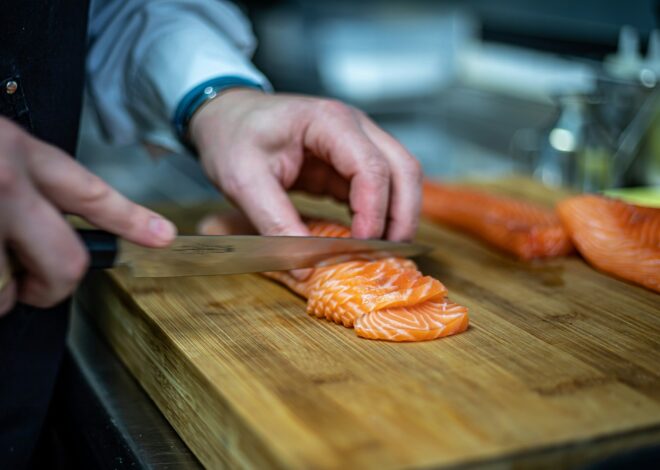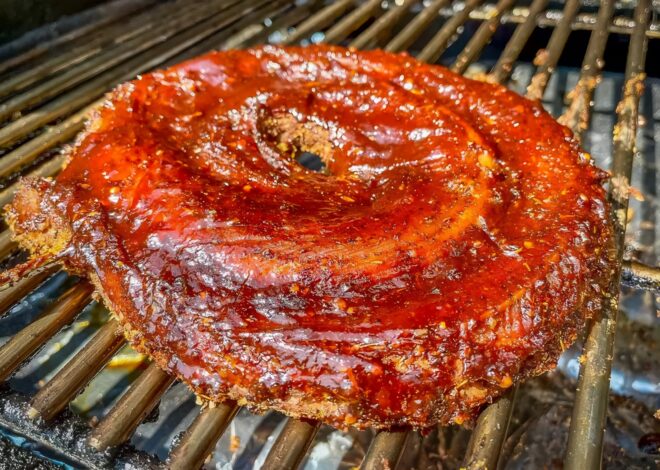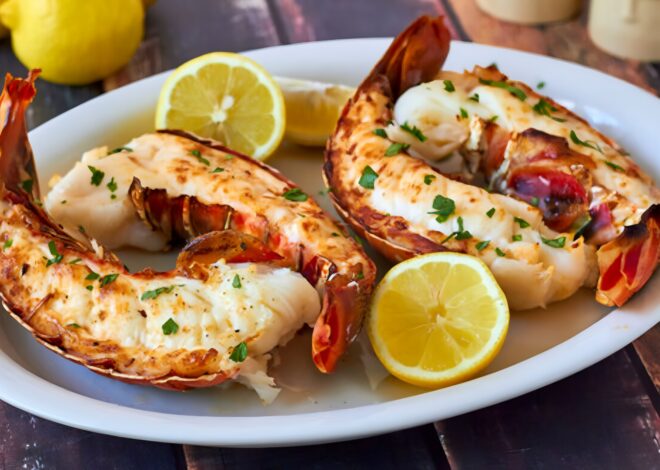
How To Cook Elk Meat
Welcome to our step-by-step guide on how to cook elk meat. Elk meat is a unique and flavorful alternative to traditional meats like beef or pork. With its rich taste and lean profile, it has gained popularity among adventurous home cooks and health-conscious eaters alike. If you’ve never tried cooking with elk before, you might be wondering how to get started.
This guide will cover everything you need to know about preparing this delicious protein. From sourcing quality elk meat to mastering various cooking techniques, you’ll soon find yourself whipping up mouthwatering dishes that impress family and friends. So lace up your apron—let’s explore the exciting world of elk meat!
The Benefits of Cooking with Elk Meat
Elk meat stands out as a lean and nutritious alternative to traditional beef. With lower fat content, it offers a heart-healthy option without sacrificing flavor. Packed with protein, elk is an excellent choice for those seeking to build muscle or maintain energy levels throughout the day.
It contains essential vitamins and minerals like B vitamins, iron, and zinc that contribute to overall health. Cooking with elk also supports sustainable practices. Many hunters prioritize ethical sourcing by obtaining their meat from wild populations rather than factory farming processes.
Furthermore, the unique taste of elk adds a gourmet twist to everyday dishes. Its rich flavor profile can elevate your meals while introducing variety into your culinary repertoire. Opting for elk not only enriches your diet but also enhances the dining experience with its distinctive characteristics.
Where to Source Elk Meat
Finding quality elk meat can be an adventure. Start by checking local farmers’ markets or specialty butcher shops. They often carry game meats, including elk. If you’re near regions where hunting is popular, connect with hunters who might share their harvest.
Many will sell or trade cuts of meat directly to consumers. Online retailers are also a great option. Several companies specialize in sourcing and delivering high-quality elk meat straight to your door. Consider visiting websites that focus on sustainable farming practices as they may offer elk sourced from ethical farms.
Always check for certifications ensuring humane treatment and sustainability. Don’t forget about community-supported agriculture (CSA) programs. Some CSAs include exotic meats like elk in their offerings, allowing you to try new flavors while supporting local farms.
Preparation and Seasoning Tips for Elk Meat
Preparation is key when it comes to cooking elk meat. Start by trimming off any excess fat, as this can lead to a gamey flavor. Since elk is leaner than beef, proper handling ensures the best taste and texture. Marinating your elk can enhance its natural flavors.
A simple mix of olive oil, garlic, soy sauce, and herbs works wonders. Let it sit for at least an hour or overnight for deeper absorption. When seasoning, keep it straightforward but impactful. Use coarse salt and fresh cracked pepper as your base. Add spices like paprika or cumin for warmth without overpowering the meat’s rich profile.
For those adventurous in the kitchen, consider a dry rub with brown sugar and smoked paprika for added depth. Experimentation with flavors will reward you with deliciously unique results that highlight this special protein!
Cooking Methods for Elk Meat:
Each method has its charm, making elk versatile in any kitchen setting. Choose based on your mood or occasion—there’s no wrong way to enjoy this exquisite protein!
– Grilling
Grilling elk meat brings out its rich, gamey flavor in a way few cooking methods can. Start by choosing quality cuts, like steaks or chops, for the best results.
Marinating is key to enhancing tenderness and taste. Use a blend of olive oil, garlic, herbs, and spices to create a flavorful soak. Let it sit for several hours or overnight to absorb all the goodness.
When grilling, preheat your grill to medium-high heat. This helps achieve that perfect sear while keeping the inside juicy. Cook elk steaks for about 4-6 minutes per side for medium-rare; remember that elk cooks faster than beef.
Keep an eye on internal temperatures using a meat thermometer. Aim for around 130°F (54°C) for optimal juiciness without overcooking.
Pair grilled elk with fresh vegetables or a tangy sauce to elevate your meal further! Enjoy experimenting with different wood chips for added smokiness too.
– Roasting
Roasting elk meat is a fantastic way to enhance its rich flavor while keeping it tender. Start by preheating your oven to 325°F (163°C).
Before cooking, season the elk roast generously with salt, pepper, and your favorite herbs. Garlic and rosemary pair beautifully with this gamey meat.
Place the seasoned roast on a rack in a roasting pan. This allows for even heat circulation and helps achieve that perfect crust. Roast until it reaches an internal temperature of about 130-135°F (54-57°C) for medium-rare.
Baste occasionally with broth or melted butter to keep the meat moist during cooking. Letting it rest before slicing will ensure juicy bites every time.
Serve with roasted vegetables or potatoes to complement the robust taste of elk. Enjoying a perfectly roasted elk dish makes for an unforgettable meal experience!
– Stewing
Stewing elk meat brings out its rich flavors and tenderizes the cuts beautifully. This method is perfect for tougher cuts, making them melt-in-your-mouth delicious.
Begin by browning your seasoned elk meat in a heavy pot or Dutch oven. The initial sear enhances the taste, creating a base layer of flavor.
Next, add aromatic vegetables such as onions, carrots, and celery. Pour in some broth or wine to deglaze the pot. Scrape up those tasty bits stuck to the bottom; they hold immense flavor.
Let everything simmer gently on low heat. Patience is key here—the longer it cooks, the more tender the meat becomes. Add herbs like thyme or bay leaves for an aromatic touch.
Don’t forget about timing; check occasionally to ensure it doesn’t dry out. A well-stewed elk dish will warm your home with enticing aromas while delivering comforting satisfaction when served hot!
Delicious Recipes Using Elk Meat:
Elk meat is incredibly versatile, making it the star of various delicious dishes.
– Elk Chili
Elk chili is a game-changer for any chili lover. Rich in flavor and packed with nutrients, it elevates this classic dish to new heights.
Start with ground elk meat. It’s leaner than beef but still offers that satisfying richness. Sauté some onions, garlic, and bell peppers in a pot until they soften. Then add the elk meat, browning it well for maximum flavor.
Toss in your favorite spices—cumin, paprika, and chili powder work wonders together. Don’t forget canned tomatoes and beans; they provide depth and texture to the mix.
Let everything simmer on low heat for at least an hour. This allows the flavors to meld beautifully. Serve hot with cornbread or over rice for a comforting meal you’ll crave again and again.
Garnish each bowl with cheese or fresh cilantro for an extra touch of deliciousness!
– Grilled Elk Steak
Grilled elk steak is a culinary delight that elevates any outdoor cooking experience. Its rich, gamey flavor pairs beautifully with robust seasonings.
Start by marinating the steak for several hours. A blend of olive oil, garlic, and fresh herbs can really enhance its natural taste. Don’t forget to add salt and pepper for that essential seasoning kick.
Preheat your grill to medium-high heat before placing the elk steaks on it. Cook them for about 4-6 minutes per side, depending on thickness. Aim for a medium-rare finish to keep the meat juicy and tender.
Letting the steak rest after grilling allows juices to redistribute throughout the meat—this step is crucial! Serve it sliced against the grain for maximum tenderness, complemented by a drizzle of balsamic reduction or your favorite sauce for added depth. Enjoy every savory bite!
– Elk Stew
Elk stew is a comforting dish that showcases the rich flavors of this game meat. The process begins by browning chunks of elk in a heavy pot, allowing them to develop a beautiful crust.
Next, add aromatic vegetables like onions, carrots, and celery for depth. A splash of red wine can elevate the flavor profile while deglazing the pan to capture all those tasty bits stuck at the bottom.
Simmering your stew with hearty herbs such as thyme and bay leaves brings warmth to each bite. Consider adding potatoes or parsnips for added texture and heartiness.
Let it cook low and slow until the elk becomes tender—this may take several hours but is well worth it. Serve hot with fresh bread or over creamy mashed potatoes for an unforgettable meal that warms both body and soul.
– Elk Burgers
Elk burgers offer a delightful twist on the classic favorite. Their rich flavor and lean texture make them an excellent choice for those looking to elevate their grilling game.
Start with ground elk meat, which is lower in fat but high in protein. This means they cook quickly, so keep an eye on them to prevent overcooking.
For seasoning, simple is often best. A blend of salt, pepper, garlic powder, and maybe a dash of smoked paprika can enhance the natural flavor without overpowering it.
When cooking elk burgers on the grill or stovetop, aim for medium-rare to maintain juiciness. Pair them with fresh toppings like avocado or sautéed mushrooms for added richness.
Serving these savory patties on a toasted bun creates the perfect vessel for all those delicious flavors. Don’t forget your favorite condiments!
Pairing Elk Meat with Side Dishes and Sauces
Pairing elk meat with the right side dishes and sauces can elevate your meal to new heights. The rich, gamey flavor of elk complements earthy vegetables beautifully. Consider roasted root vegetables like carrots, parsnips, or beets for a hearty touch.
A fresh side salad made with mixed greens and tangy vinaigrette adds brightness to the dish. You might also try sautéed mushrooms, which pair wonderfully with elk’s robust taste. When it comes to sauces, a red wine reduction can add depth without overpowering the meat.
Alternatively, a berry-based sauce—like blackberry or raspberry—provides a delightful contrast through its sweetness. Don’t forget about grains! Quinoa or wild rice brings texture and nutty flavors that enhance each bite of elk meat. These combinations ensure that every aspect of your plate harmonizes perfectly together.
Safety Precautions when Cooking Elk Meat
When working with elk meat, safety is paramount. Begin by ensuring that your hands and all surfaces are clean before handling any raw meat. Bacteria can easily spread, so cleanliness helps prevent foodborne illnesses. Always use separate cutting boards for meats and vegetables to avoid cross-contamination.
This simple step goes a long way in maintaining hygiene while cooking. Elk meat should be cooked to an internal temperature of at least 160°F (71°C). Investing in a reliable meat thermometer will ensure that you achieve this goal without guesswork. Store leftover elk properly as well.
Cool it down quickly and refrigerate within two hours of cooking. Aim to consume leftovers within three days for the best flavor and safety. Keep pets away from uncooked or raw elk products; they can carry germs harmful to both humans and animals alike. Stay aware, stay safe!
Conclusion: Enjoying the Unique Flavor of Elk Meat
Elk meat offers a unique flavor profile that stands out in the world of culinary delights. Its rich taste and lean texture make it an excellent choice for those looking to explore alternatives to traditional meats. Cooking with elk not only introduces you to new flavors but also provides numerous health benefits.
Whether you’re preparing a hearty stew, grilling steaks on the barbecue, or creating delicious elk burgers, there’s no shortage of ways to enjoy this gamey delicacy. Pairing elk with the right side dishes and sauces can enhance its natural flavors even more, making every meal memorable. Don’t forget about safety precautions while cooking.
Like any meat, proper handling and preparation are crucial for enjoying your dish without worry. As you dive into the world of elk meat cooking, remember that experimentation is key. Embrace different methods and recipes until you find what suits your palate best. The journey will be as enjoyable as the meals themselves!



